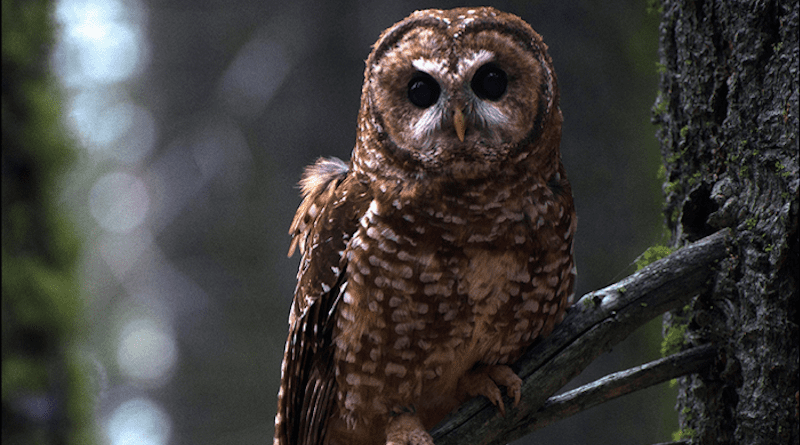California Spotted Owls Benefit From Forest Restoration
This finding is showcased in “Forest restoration limits megafires and supports species conservation under climate change,” a new research publication released this week in Frontiers in Ecology and the Environment. Lead author Gavin Jones, Ph.D., a research ecologist with the USDA Forest Service (USFS) Rocky Mountain Research Station, said the research shows that forest restoration and the preservation of the spotted owl are not mutually exclusive, as had previously been feared.
“We’ve shown that restoration provides co-benefits to owls by reducing their exposure to stand-replacing wildfire, which leads to loss of nesting habitat,” Jones said.
The research team also included collaborators from the USFS Pacific Southwest Research Station, USFS Region 5, University of Wisconsin-Madison, and University of California-Merced.
The scientists developed a fire simulation model that predicted future severe fire across the Sierra Nevada through mid-century. The predicted amount of severe fire then changed as a function of simulated fuels reduction and forest restoration treatments. The fire model was then linked to a Sierra Nevada-wide population model of California spotted owls, which also responded to potential direct effects of treatments on owl habitat.
The science found that placing treatments inside owl territories cut the amount of predicted severe fire nearly in half compared to treating the same total area outside of such territories. Thus, treating inside owl territories may have an outsized effect on reducing future severe fire, while providing a net benefit to the California spotted owl population.
According to Jones, “Even under climate change, forest management can move the needle on forest ecosystem conservation by reducing future stand-replacing fire and do so in a way that safeguards habitat for sensitive species like the California spotted owl.”
Jones added that the research team is now expanding its efforts beyond the spotted owl to see how the broader forest wildlife might respond to future fire and forest management.

